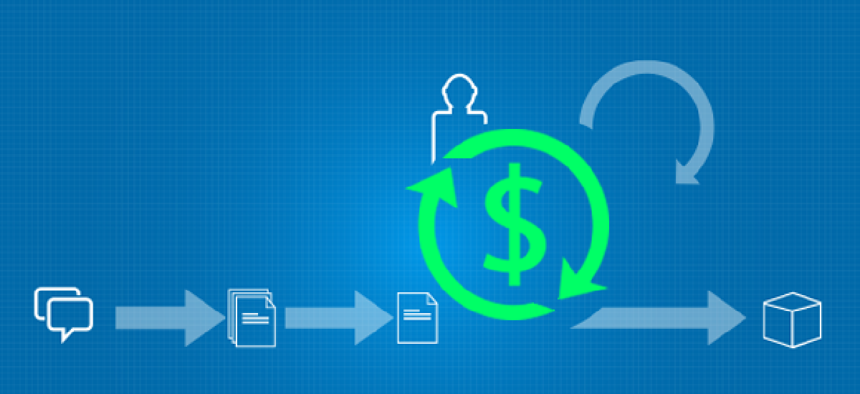NGA tries paying by the sprint


Connecting state and local government leaders
The same iterative and highly collaborative approaches that are increasingly used for software development are being applied to the contracting process as well.
As government agencies look to modernize their IT procurement efforts, many are taking a cue from agile development. The same iterative and highly collaborative approaches that are increasingly used for software development are being applied to the contracting process as well.
In December 2015, the National Geospatial-Intelligence Agency awarded Octo Consulting a five-year, $34 million agile development contract for software engineering, infrastructure and continuous support for its Agile Web Presence program, which develops and sustains the agency’s internal and external web presences. The contract, described as a “development capacity” rather than project-based acquisition, allows NGA to track what it's paying for almost in real time as the coding progresses.
“This is unique in that the government is specifying a fixed amount for a finite amount of development capacity,” said Mehul Sanghani, founder and CEO of Octo. NGA is setting two-week sprint cycles for development that will deliver 70 story points or business requirements for a fixed fee. Every six months, the project will be evaluated for performance and deliverable assessment.
Using story points is a common way to measure the capacity for each sprint. If a project requests 10 story points (similar to project parts) per sprint, for example, the developer can determine how many can realistically be completed in the first iteration. Usually, if the entire request cannot be completed in one sprint, those story points and services will be added onto additional iterations.
According to Sanghani, NGA officials were looking for an iterative process, cost efficiency, resiliency with a secure infrastructure and the ability to swell capacity as new functional requirements came in the door. The agency also required sustainment plans for existing operations, management for its recent adoption of a government cloud solution with Amazon Web Services and higher-level developmental plans -- all of which demanded the flexibility to adjust requirements on the fly.
For NGA, having strong visibility into what is being developed has been extremely beneficial, and a dramatic change from how the agency usually worked with traditional contractors. “When you’re talking about agile software development it requires a heavy, heavy degree of collaboration and cooperation,” Sanghani explained .
“The customer needs to have a seat at the table, to help prioritize and define with us a set of requirements that we’re going to deliver for them at each development sprint cycle," he said. "There’s actually been some hiccups associated with that level of time commitment we’re demanding from them to engage with us," Sanghani said. “But those delivery hiccups fall squarely on our shoulders,” he added. “As with any engagement of this size and scope, coupled with the new contract vehicle, we’ve had to work through these issues, but thankfully NGA has been a terrific partner and been extremely accommodating, and we have already seen the benefits of this new contract model.”
Despite the minor speedbumps, Octo has been on the ground running with NGA since mid-2015. Sanghani believes agencies can also benefit from this model’s ability to scale up and down the level of development process when needed -- a model he said aligns well with the utility-based computing approach that many organizations are embracing.
Editor's note: This article was changed Feb. 9 to include additional comments from Octo Consulting's Mehul Sanghani.
NEXT STORY: How crime stats can lie




